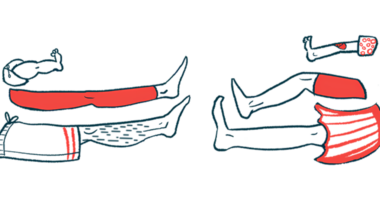Large study: 1 in 5 patients have a family history of Parkinson’s
Researchers explored presence of disease beyond first-degree relatives

About 1 in 5 people with Parkinson’s disease in Italy have a family history of the disorder when the analysis extends beyond first-degree relatives to second- and third-degree relatives, a large-scale study has shown.
First-degree relatives are comprise parents, siblings, and children. Second-degree relatives are aunts, uncles, grandparents, grandchildren, nieces, and nephews, while third-degree kinship includes first cousins, great-grandparents, great-aunts, great-uncles, and great-grandchildren.
People with Parkinson’s “have a higher prevalence of family members affected than previously reported,” the researchers wrote. “Family history collection beyond the core family is essential to discover disease clusters and identify novel risk factors for Parkinson’s.”
The study, “Family History in Parkinson’s Disease: A National Cross-Sectional Study,” was published in Movement Disorders Clinical Practice.
Both genetic and environmental factors are involved in Parkinson’s, a neurodegenerative disorder marked by motor symptoms such as slowed movements, rigidity, tremor, and balance problems. Nonmotor symptoms that include sleep disorders, emotional complications, and memory and cognition difficulties, can also occur.
A family history is an established risk factor for the disorder, especially among first-degree relatives. About 15% of Parkinson’s patients have a family history of the disease, studies suggest.
Parkinson’s disease in extended family
Researchers across Italy sought to understand the family history of people with Parkinson’s beyond first-degree relatives and enrolled 2,035 adults with Parkinson’s in 14 Italian regions in their study. For each patient, the researchers obtained data via a structured interview, with information on family history, tremors, cognitive impairment, and major depressive and bipolar disorders. Clinical and genetic data were collected through a neurological exam and local databases.
The mean age of the patients was 68.9 and the onset of motor symptoms happened at a mean age of 60.2. The average disease duration of 8.7 years. For every five patients, three were men.
A family history that extended to third-degree relatives was reported by 34.5% of patients, with 21.9% receiving a formal Parkinson’s diagnosis. Among those with a certain or possible family history, 67.9% reported at least one first-degree affected relative and 32.1% reported a second- or third-degree affected family member.
Regarding nonmotor symptoms, 11.9% of patients reported a family history of cognitive impairment: 2% for tremors, 6.2% for depression, and 1.2% for bipolar disorders. For possible cases, the prevalence significantly increased, with cognitive impairment at 21.6%, tremors at 8.2%, depression at 12.1%, and bipolar disorder at 2%.
Researchers then compared patients with a family history with those without one, which is referred to as sporadic Parkinson’s, matched by age and sex. The mean age at disease onset was significantly younger among patients with a family history than those with sporadic disease (58.5 vs. 60.8). The disease duration was also significantly longer with a family history (9.6 vs. 8.4 years).
A family history of depression was significantly more common in the familial group (9.8% vs. 5.7%). While there was a trend toward more tremors in those with a family history (3.7% vs. 2.0%), there were no differences in the occurrence of cognitive and bipolar disorders.
When adjusted for disease duration, there were no differences between the two groups in the disease stage, based on the Hoehn and Yahr scale. The distribution of motor and nonmotor symptoms was also similar, except for a decreased sense of smell, called hyposmia, which occurred more often in the familial group.
Genetic testing was performed in 443 patients (21.8%) and looked for variants in genes associated with Parkinson’s (SNCA, LRRK2, GBA1, PRKN, and PINK1). When the researchers focused on those with a certain positive or negative family history, a positive genetic result was more frequent in the familial group than the sporadic group (36.4% vs. 25.8%). Still, the groups had similar prevalences of the most common Parkinson’s-related genes, GBA1, LRRK2, and PRKN.
The findings “should stimulate further studies evaluating the risk of [Parkinson’s] in family members to improve the counseling in [Parkinson’s] patients and their families,” the researchers wrote.







